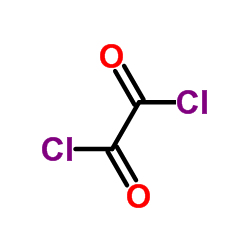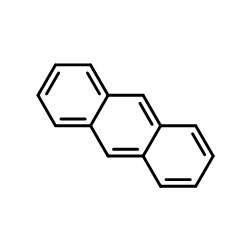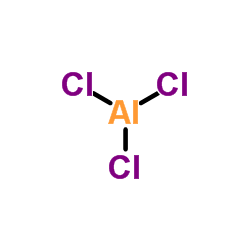1,2-aceanthrylenedione

1,2-aceanthrylenedione structure
|
Common Name | 1,2-aceanthrylenedione | ||
|---|---|---|---|---|
| CAS Number | 6373-11-1 | Molecular Weight | 232.23400 | |
| Density | 1.433g/cm3 | Boiling Point | 462.6ºC at 760 mmHg | |
| Molecular Formula | C16H8O2 | Melting Point | 270-273ºC(lit.) | |
| MSDS | Chinese USA | Flash Point | 199.7ºC | |
| Name | aceanthrylene-1,2-dione |
|---|---|
| Synonym | More Synonyms |
| Density | 1.433g/cm3 |
|---|---|
| Boiling Point | 462.6ºC at 760 mmHg |
| Melting Point | 270-273ºC(lit.) |
| Molecular Formula | C16H8O2 |
| Molecular Weight | 232.23400 |
| Flash Point | 199.7ºC |
| Exact Mass | 232.05200 |
| PSA | 34.14000 |
| LogP | 3.37200 |
| Index of Refraction | 1.807 |
Synonym:1,2-Aceanthrylenedione Section 2 - COMPOSITION, INFORMATION ON INGREDIENTS
Risk Phrases: None Listed. Section 3 - HAZARDS IDENTIFICATION EMERGENCY OVERVIEW
The toxicological properties of this material have not been fully investigated. Potential Health Effects Eye: May cause eye irritation. Skin: May cause skin irritation. Ingestion: May cause irritation of the digestive tract. The toxicological properties of this substance have not been fully investigated. Inhalation: May cause respiratory tract irritation. The toxicological properties of this substance have not been fully investigated. Chronic: No information found. Section 4 - FIRST AID MEASURES Eyes: Flush eyes with plenty of water for at least 15 minutes, occasionally lifting the upper and lower eyelids. Get medical aid. Skin: Get medical aid. Flush skin with plenty of water for at least 15 minutes while removing contaminated clothing and shoes. Wash clothing before reuse. Ingestion: Never give anything by mouth to an unconscious person. Get medical aid. Do NOT induce vomiting. If conscious and alert, rinse mouth and drink 2-4 cupfuls of milk or water. Inhalation: Remove from exposure and move to fresh air immediately. If not breathing, give artificial respiration. If breathing is difficult, give oxygen. Get medical aid. Notes to Physician: Section 5 - FIRE FIGHTING MEASURES General Information: As in any fire, wear a self-contained breathing apparatus in pressure-demand, MSHA/NIOSH (approved or equivalent), and full protective gear. During a fire, irritating and highly toxic gases may be generated by thermal decomposition or combustion. Runoff from fire control or dilution water may cause pollution. Extinguishing Media: In case of fire, use water, dry chemical, chemical foam, or alcohol-resistant foam. Use agent most appropriate to extinguish fire. Section 6 - ACCIDENTAL RELEASE MEASURES General Information: Use proper personal protective equipment as indicated in Section 8. Spills/Leaks: Vacuum or sweep up material and place into a suitable disposal container. Clean up spills immediately, observing precautions in the Protective Equipment section. Avoid generating dusty conditions. Provide ventilation. Section 7 - HANDLING and STORAGE Handling: Wash thoroughly after handling. Remove contaminated clothing and wash before reuse. Use with adequate ventilation. Minimize dust generation and accumulation. Avoid contact with eyes, skin, and clothing. Keep container tightly closed. Avoid ingestion and inhalation. Storage: Keep container closed when not in use. Store in a tightly closed container. Store in a cool, dry, well-ventilated area away from incompatible substances. Section 8 - EXPOSURE CONTROLS, PERSONAL PROTECTION Engineering Controls: Facilities storing or utilizing this material should be equipped with an eyewash facility and a safety shower. Use adequate ventilation to keep airborne concentrations low. Exposure Limits CAS# 6373-11-1: Personal Protective Equipment Eyes: Wear appropriate protective eyeglasses or chemical safety goggles as described by OSHA's eye and face protection regulations in 29 CFR 1910.133 or European Standard EN166. Skin: Wear appropriate protective gloves and clothing to prevent skin exposure. Clothing: Wear appropriate protective clothing to minimize contact with skin. Respirators: Follow the OSHA respirator regulations found in 29 CFR 1910.134 or European Standard EN 149. Use a NIOSH/MSHA or European Standard EN 149 approved respirator if exposure limits are exceeded or if irritation or other symptoms are experienced. Section 9 - PHYSICAL AND CHEMICAL PROPERTIES Physical State: Solid Color: orange-brown Odor: Not available. pH: Not available. Vapor Pressure: Not available. Viscosity: Not available. Boiling Point: Not available. Freezing/Melting Point: 268.00 - 271.00 deg C Autoignition Temperature: Not applicable. Flash Point: Not applicable. Explosion Limits, lower: Not available. Explosion Limits, upper: Not available. Decomposition Temperature: Solubility in water: Specific Gravity/Density: Molecular Formula: C16H8O2 Molecular Weight: 232.24 Section 10 - STABILITY AND REACTIVITY Chemical Stability: Stable under normal temperatures and pressures. Conditions to Avoid: Incompatible materials, dust generation, excess heat, strong oxidants. Incompatibilities with Other Materials: Oxidizing agents. Hazardous Decomposition Products: Carbon monoxide, irritating and toxic fumes and gases, carbon dioxide. Hazardous Polymerization: Has not been reported. Section 11 - TOXICOLOGICAL INFORMATION RTECS#: CAS# 6373-11-1 unlisted. LD50/LC50: Not available. Carcinogenicity: Aceanthrenequinone - Not listed by ACGIH, IARC, or NTP. Section 12 - ECOLOGICAL INFORMATION Section 13 - DISPOSAL CONSIDERATIONS Dispose of in a manner consistent with federal, state, and local regulations. Section 14 - TRANSPORT INFORMATION IATA Not regulated as a hazardous material. IMO Not regulated as a hazardous material. RID/ADR Not regulated as a hazardous material. Section 15 - REGULATORY INFORMATION European/International Regulations European Labeling in Accordance with EC Directives Hazard Symbols: Not available. Risk Phrases: Safety Phrases: S 24/25 Avoid contact with skin and eyes. WGK (Water Danger/Protection) CAS# 6373-11-1: No information available. Canada None of the chemicals in this product are listed on the DSL/NDSL list. CAS# 6373-11-1 is not listed on Canada's Ingredient Disclosure List. US FEDERAL TSCA CAS# 6373-11-1 is not listed on the TSCA inventory. It is for research and development use only. SECTION 16 - ADDITIONAL INFORMATION N/A |
| Personal Protective Equipment | Eyeshields;Gloves;type N95 (US);type P1 (EN143) respirator filter |
|---|---|
| Hazard Codes | Xi |
| Risk Phrases | 36/37/38 |
| Safety Phrases | S26-S37-S39 |
| RIDADR | NONH for all modes of transport |
| WGK Germany | 3 |
| HS Code | 2914190090 |
|
~84% 
1,2-aceanthryle... CAS#:6373-11-1 |
| Literature: Yao, Jun Hong; Chi, Chunyan; Wu, Jishan; Loh, Kian-Ping Chemistry - A European Journal, 2009 , vol. 15, # 37 p. 9299 - 9302 |
|
~% 
1,2-aceanthryle... CAS#:6373-11-1 |
| Literature: Chemische Berichte, , vol. 44, p. 206 |
| HS Code | 2914190090 |
|---|---|
| Summary | 2914190090 other acyclic ketones without other oxygen function。Supervision conditions:None。VAT:17.0%。Tax rebate rate:9.0%。MFN tariff:5.5%。General tariff:30.0% |
|
Reactions of Acenaphthenequinone and Aceanthrenequinone with Arenes in Superacid.
Appl. Catal. A Gen. 336(1-2) , 128-132, (2008) The hydroxyalkylation reactions of aceanthrenequinone (6) and acenapthenequinone (7) with a series of arenes have been studied. In reactions with the Br__nsted superacid CF(3)SO(3)H (triflic acid), th... |
|
|
Planarity and constraint of the carbonyl groups in 1,2-diones are determinants for selective inhibition of human carboxylesterase 1.
J. Med. Chem. 50 , 5727-34, (2007) Carboxylesterases (CE) are ubiquitous enzymes responsible for the detoxification of xenobiotics, including numerous clinically used drugs. Therefore, the selective inhibition of these proteins may pro... |
|
|
Deoxygenation of some α-dicarbonyl compounds by tris(diethylamino)phosphine in the presence of fullerene C60.
J. Org. Chem. 76(8) , 2548-57, (2011) The reactions of such cyclic α-diketones as acenaphthenequinone, aceanthrenequinone, and N-alkylisatins, with hexaethyltriaminophosphine in the presence of the fullerene C(60), lead to the formation o... |
| acenanthrene-9,10-dione |
| 1,2-Aceanthrenedione |
| 1,2-aceanthrenequinone |
| Aceanthraquinone |
| Aceanthrenequinone |
| Aceanthren-1,2-dion |
| 1,2-Aceanthrylenedione |
| Aceanthrene-9,10-dione |
| MFCD00013265 |
| aceanthrene-1,2-dione |


